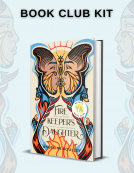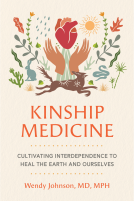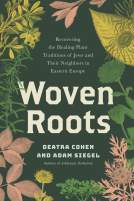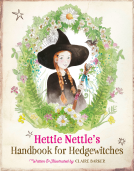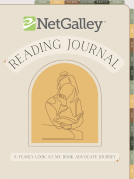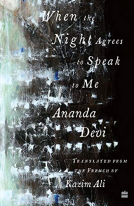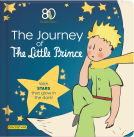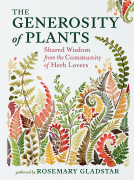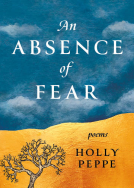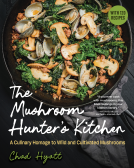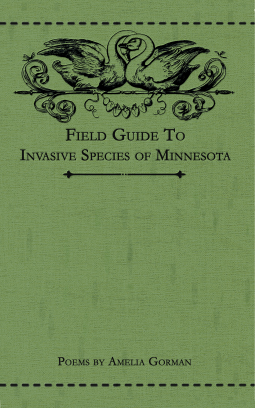
Field Guide to Invasive Species of Minnesota
Poems
by Amelia Gorman
This title was previously available on NetGalley and is now archived.
Send NetGalley books directly to your Kindle or Kindle app
1
To read on a Kindle or Kindle app, please add kindle@netgalley.com as an approved email address to receive files in your Amazon account. Click here for step-by-step instructions.
2
Also find your Kindle email address within your Amazon account, and enter it here.
Pub Date 6 Sep 2021 | Archive Date 31 Oct 2021
Description
Gorman's Field Guide to Invasive Species of Minnesota is a poetic journey into the strange and wonderful world known previously only to the wild. Take a walk through the woods of Minnesota, past the Salton Sea, into the high grass of the prairie, beyond the rivers and creekbeds, into a world of the near-future where nature rules all. After all, the biggest ecological danger of invasive species is the monoculture they create.
These poems are a perfect fit for nature lovers and those who want to preserve our planet.
Advance Praise
"A delicate blend of ecological awareness and mythological sensibility, Field Guide to Invasive Species of Minnesota lures the reader in with a semblance of clarity and rationality, and then tips you into a complex surreal world that resembles ours--it is ours--but is also not. I want to wrestle with some of these poems until they yield meaning, but they dance, just out of reach, evanescent and tantalizing."
—Deborah L. Davitt, author of The Gates of Never
“A thoughtful and intelligent collection of one-page poems and elegant illustrations that slowly bud from gentle cricket song into a poison-leafed and weedy future. Field Guide to Invasive Species of Minnesota is a thorned and exciting imagining where each specimen is handled as if by a daring and sun-smeared trickster, the delight in getting muddy and making up stories proudly prominent, and a refreshing pleasure in a collection of nature poetry.”
—Julie Reeser, author of Beak, Full of Tongue and Terracotta Pomegranate
"This good book by Amelia Gorman really struck a nerve. Minnesota was my happy summer home for decades. Then some hideous things called Zebra Mussels showed up in the water and somehow seemed to ruin everything. It never occurred to me to write a dystopian book about the horror and alienation these things caused. I wish I had. This is a clever and enjoyable chapbook that captures the mood of how our lives are invaded by change."
—John Philip Johnson, Pushcart Prize-winning science fiction writer and poet
Poems inspired by ecological destruction--both ongoing and potential--can be difficult to pull off. But Amelia Gorman has triumphantly managed it here, turning to 21 different invasive species as springs for 21 different poems, ranging from short brutal lyrics to more complicated prose poems. Leaping between the now and near-future, they offer warning and hope in near measure, with lovely and shocking images. If you've never connected mute swans and pianos before now, nor contemplated the full meaning of your desire for an unblocked view - well, you will after this. A timely and needed collection, especially recommended for readers interested in poems that straddle the lines between the literary and the speculative.
—Mari Ness, author of Through Immortal Shadows Singing and Resistance and Transformation: On Fairy Tales.
Marketing Plan
To receive a physical ARC, reply to the NetGalley approval email or send us a note at:
contact@interstellarflightpress.com
To receive a physical ARC, reply to the NetGalley approval email or send us a note at:
contact@interstellarflightpress.com
Available Editions
| EDITION | Paperback |
| ISBN | 9781953736031 |
| PRICE | US$11.99 (USD) |
Featured Reviews
4/5 Beautiful collection of poems!
The art of the different species is so beautiful along with the beautiful cover! I enjoyed most of the poems, a few lost me but I was always roped back in by the next poem. It was a quick read and if you enjoy nature I'd pick it up! This collection reminds me of fall and those pictures of Pinterest girls holding hot cider. It felt like a home away from home.
Will hopefully pick up a physical copy for my collection sometime soon :)
I read this early on Netgalley in exchange for an honest review.
This was such an interesting poetry collection, beautifully done prose and such simple but stark illustrations. Not only does it check those boxes but it was also informative! Many of these species I recognized but like who knew there are eels in Minnesota? Certainly not me.
Thank you to netgalley and the publishers for providing me with an arc for an honest review!
 Allie M, Reviewer
Allie M, Reviewer
* I was provided a free copy of this book in exchange for a fair and honest review *
I have enjoyed every book I have read from Interstellar Flight Press, and this one was no exception. I will probably end up buying a print copy because the vintage illustrations of the invasive species were lovely, but I feel a screen doesn't do them justice.
I love conceptual poetry collections, eco-horror (or eco-dystopia, your choice), and speculative poetry, so this book hit every high note for me. It also doesn't hurt that I have published a chapbook of poems whose title includes "A Field Guide To...", so how could I not feel drawn to this book? Though I hail from Florida and now live on the West Coast, I think that if you love nature, the outdoors, and flora/fauna, then you would appreciate this book. Every state has its own invasive species, so although these are specific to Minnesota, the poems are relatable.
I enjoyed this poet's quiet, evocative language and poem structure. I appreciated these poems on a level of craftsmanship, as well as emotional and lyrical connection. The mythology was elegantly implemented in the work, and the plunge into surreal imagery was like a mash-up of Jeff VanderMeer & David Lynch. (That means I loved it.) I also liked the near-future setting, which gives the collection a sense of urgency, because it's a bleak future that's all-too-possible unless we take steps to correct our course. There is meaning and message in these poems, as well as beauty and depth.
The best part of this book was, for me, a surprise. The afterword, which is an essay in itself, contextualized the creation of these poems and their significance to the author. I would have loved a few blurbs or appendices about how the species came to be invasive, but it wasn't an obstacle to my enjoyment of the book or a requisite to understanding them. However, I would have loved the afterword to be the introduction to the poems, because I think that context for their genesis and the author's personal connection to these poems will deepen a reader's appreciation for them. I worry that readers may gloss over the afterword, and that would be a shame, because it deepened my connection to the poems.
This collection reminded me to take a walk, enjoy the trees, and flowers, and sun, and not to take any of it for granted. That, in itself, makes this book of poetry invaluable.
Field Guide to Invasive Species of Minnesota is a near-future poetry collection, set roughly 20 years from now in a world where our climate has gotten worse and the invasive species currently living in Minnesota have also gotten worse.
There's a lot to like in this collection, from great depictions of plants and animals to the hints at what the world has become in twenty short years. There are some poems, though, that feel like they're about watching grass grow.
While there are some gems in the first part of the collection (Mute Swan, for example), the collection really picks up at poem #15, Sea Lamprey. The last seven poems are all pretty special.
All in all, if you're into plant poetry, climate poetry, or like poetry and are from the upper Midwest, or better yet, Minnesota, this is a short and sweet collection that's worth your time.
An ecological disaster has thrown the world into chaos. As invasive flora and fauna encroach upon the locals, Amelia Gorman’s narrator documents the collapse of civilization. The imagery is lush, the ideas clever and executed well, poems such as Curly-leaf Pondweed and Queen Anne’s Lace are deliciously creepy. Field Guide to Invasive Species of Minnesota: Poems is a natural fit with the novels of Margaret Atwood and Emily St. John Mandel, although the reader will be left wishing each poem was a novel in it’s own right.
As someone who works in forestry, I thought this collection would be uniquely interesting to me. And I was right! The species selected are both familiar and not, as I'm in the Pacific Northwest rather than Minnesota, but I think the language used to describe (and reimagine) these species make them all approachable. I will admit that the poems were a bit wordy at times, but that's only based on my personal taste.
I think I would've enjoyed a follow up in the final pages that included a description of how all of the species became invasive. Some where explained in the author's notes on her life and experiences leading to these poems, but others weren't discussed. The information isn't necessary to the poetry collection - I just think it would've been nice.
4/5
A lovely and unsettling collection of poems that engage with the horror of unbalanced ecosystems. The juxtaposition of climate grief with the disturbing allure of apocalypse runs through its pages, the temptation of giving up revealed in poems such as the memorable No. 6—Emerald Ash Borer. Ventures from the realm of science into the realm of science fiction allow exploration of possible futures—futures that few readers are likely to find desirable beyond the enduring appeal of imagining how one might try to survive. Gorman effectively uses simple language and poetic structures to evoke and tangle with some very thorny concepts indeed.
This book is appealing in form as well as content. The cursive poem titles and attractive illustrations—resembling the style of hand-drawn plates in vintage field guides—are an excellent match for its title, cover, and themes. Some of the illustrations—most taken from public domain sources—are better than others, but none are poorly done. Book design is, I think, often particularly important with volumes of poetry. This volume was clearly put together by a team who knew what they were doing.
Overall, I would recommend this book. It would make a good gift for lovers of nature poetry, particularly those who struggle with climate grief and might find catharsis in poems that explore the darkness of living in a world of changing—and collapsing—ecosystems.
I read a free advance review copy of this book via Netgalley, but I may well purchase a print copy.
 Hannah K, Reviewer
Hannah K, Reviewer
Interesting premise - poetry extrapolating out from a field guide into a speculative sci-fi setting. It eases you into the sci-fi aspect, but ends a bit too soon and it doesn’t get to fully spread its wings in my opinion. Chapbook though, so obviously there’s only so much it can really dive in. Existing invasive species, but extrapolated out to dystopia and chaos. Solid premise, would love to see more. (Also, maybe move the afterword to be a prologue, and do a bit of editing there?)
 Media/Journalist 16509
Media/Journalist 16509
As a Minnesota forager, gardener and nature lover as well as a poet, I couldn't resist this short poetry book. I found it to be well written and creative, though I didn't connect to many of the poems. They are dystopian and esoteric poems about invasive species in Minnesota, which is as odd as you'd expect but expertly done.
I read a digital ARC of this book via Net Galley.
Akin to the Romantic poems, this collection gives us a look into the world we have made and the world we are making.
Readers who liked this book also liked:
Rosemary Gladstar
Home & Garden, Outdoors & Nature, Religion & Spirituality
